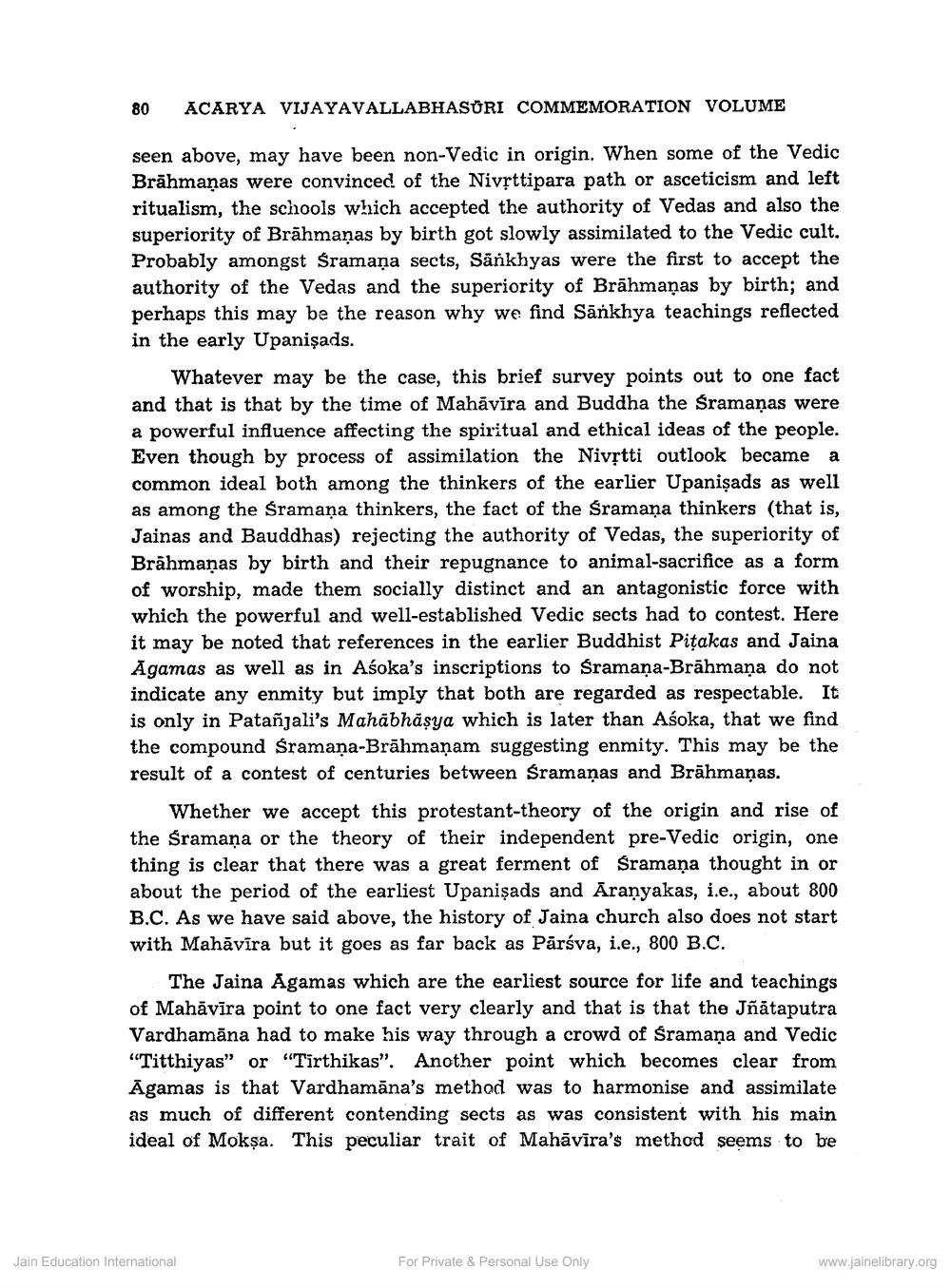Book Title: Historical Position of Jainism Author(s): J S Jetly Publisher: Z_Vijay_Vallabh_suri_Smarak_Granth_012060.pdf View full book textPage 4
________________ ACARYA VIJAYAVALLABHASURI COMMEMORATION VOLUME seen above, may have been non-Vedic in origin. When some of the Vedic Brāhmaṇas were convinced of the Nivṛttipara path or asceticism and left ritualism, the schools which accepted the authority of Vedas and also the superiority of Brähmaņas by birth got slowly assimilated to the Vedic cult. Probably amongst Sramana sects, Sänkhyas were the first to accept the authority of the Vedas and the superiority of Brähmaņas by birth; and perhaps this may be the reason why we find Sänkhya teachings reflected in the early Upanisads. 80 Whatever may be the case, this brief survey points out to one fact and that is that by the time of Mahāvīra and Buddha the Sramaņas were a powerful influence affecting the spiritual and ethical ideas of the people. Even though by process of assimilation the Nivṛtti outlook became common ideal both among the thinkers of the earlier Upanisads as well as among the Sramana thinkers, the fact of the Sramana thinkers (that is, Jainas and Bauddhas) rejecting the authority of Vedas, the superiority of Brahmanas by birth and their repugnance to animal-sacrifice as a form of worship, made them socially distinct and an antagonistic force with which the powerful and well-established Vedic sects had to contest. Here it may be noted that references in the earlier Buddhist Pitakas and Jaina Agamas as well as in Aśoka's inscriptions to Śramaṇa-Brāhmaṇa do not indicate any enmity but imply that both are regarded as respectable. It is only in Patanjali's Mahabhäṣya which is later than Aśoka, that we find the compound Śramaṇa-Brāhmaṇam suggesting enmity. This may be the result of a contest of centuries between Sramaņas and Brähmaṇas. Whether we accept this protestant-theory of the origin and rise of the Sramana or the theory of their independent pre-Vedic origin, one thing is clear that there was a great ferment of Sramana thought in or about the period of the earliest Upanisads and Aranyakas, i.e., about 800 B.C. As we have said above, the history of Jaina church also does not start with Mahavira but it goes as far back as Pārsva, i.e., 800 B.C. The Jaina Agamas which are the earliest source for life and teachings of Mahavira point to one fact very clearly and that is that the Jñataputra Vardhamana had to make his way through a crowd of Sramaņa and Vedic "Titthiyas" or "Tirthikas". Another point which becomes clear from Agamas is that Vardhamana's method was to harmonise and assimilate as much of different contending sects as was consistent with his main ideal of Mokṣa. This peculiar trait of Mahavira's method seems to be Jain Education International For Private & Personal Use Only www.jainelibrary.orgPage Navigation
1 2 3 4 5
